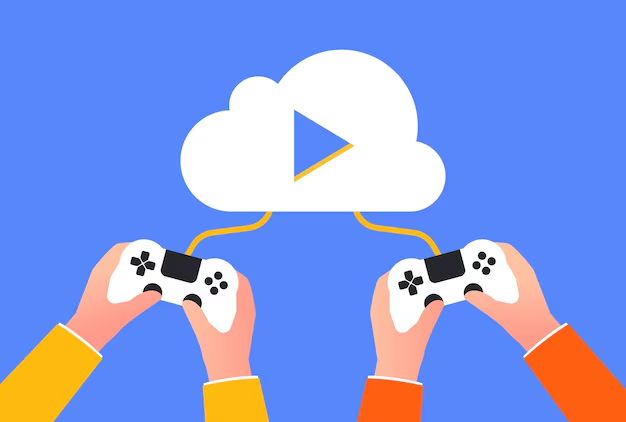The End of Local Hardware? Why Cloud Gaming Will Not Replace the Gaming PC

Every few years, someone declares that the era of the local gaming PC is over. With the rise of platforms like GeForce Now, Xbox Cloud Gaming, and PlayStation Plus Premium, it might seem like gaming is moving entirely to the cloud. These services promise high-end visuals streamed to even modest devices, removing the need for expensive graphics cards or powerful CPUs.
It sounds like the future, but the reality is much more complicated. While cloud gaming will continue to grow, it is not going to replace the gaming PC. If anything, local hardware is becoming more important, not less.
The Latency Barrier
Cloud gaming depends entirely on your connection. Every action you perform has to travel from your device to a remote data center, get processed on a virtual GPU, and return to your screen as video. Even on fast fibre connections, this round trip adds measurable latency.
For casual games this might not matter, but for fast-paced shooters, fighting games, and competitive esports, extra latency ruins the experience. A local gaming PC renders everything instantly, keeping input lag extremely low. Technologies like NVIDIA Reflex and AMD Anti-Lag+ can cut total system latency to just a few milliseconds, something that cloud gaming cannot achieve because of physical distance.
Bandwidth and Compression Limits
Cloud platforms must compress video to stream it over the internet. Even with modern codecs, compression removes fine detail and can cause visible artifacts during motion or in dark scenes. This is especially noticeable at 4K or ultrawide resolutions where bitrates must be extremely high to preserve image quality.
A local gaming PC does not need to compress anything. It sends full-resolution frames straight to your monitor with zero quality loss. This is crucial if you use high-end displays like 4K 144Hz panels or HDR monitors where compression blur can undermine the entire visual experience.
True Ownership and Upgrade Freedom
With cloud gaming, you are renting access to someone else’s hardware. You have no control over the GPU model, the amount of VRAM, or even when a platform decides to retire older hardware.
A local gaming PC is yours. You decide when to upgrade, which parts to use, and how far to push performance. Enthusiasts can install a NVIDIA GeForce RTX 5090 or AMD Radeon RX 9070 XT and know they have top-end performance for years. You can customise cooling, RGB lighting, storage layout, and even tweak CPU undervolting or GPU overclocking to get every last bit of power.
That level of personalisation and control simply does not exist on cloud platforms.
Data Centre Energy Costs vs Local Efficiency
Running games in the cloud consumes enormous amounts of energy. Massive GPU clusters in data centres must run 24/7, often at low utilisation levels, which wastes energy and produces significant heat. This is especially true for services using multi-GPU racks designed for virtualisation rather than gaming efficiency.
Local gaming PCs can be far more energy efficient on a per-user basis. Modern GPUs like the NVIDIA GeForce RTX 5080 or AMD Radeon RX 9060 XT use advanced power management to scale power draw dynamically. If you only game a few hours a day, your PC will consume far less energy than a share of an always-on cloud server.
The Local PC Still Evolves Faster
Cloud hardware refreshes slowly because it is expensive for providers to replace tens of thousands of GPUs. By contrast, the consumer PC market evolves constantly. New GPU and CPU launches like the AMD Ryzen 9 9950X or upcoming Intel Core Ultra 9 285K bring cutting-edge features long before cloud services adopt them.
Gamers on local PCs get access to new technology first. Features like DLSS 4 and FSR 4 frame generation, full path tracing, and ultra-fast DDR5 memory appear on desktop gaming rigs years before they are standard on cloud platforms. If you want the best, a local PC is still the only place to get it early.
Cloud Gaming Has Its Place
Cloud gaming is not without value. It is excellent for trying games before buying, playing on low-power laptops, or enjoying less demanding titles on the go. It also makes gaming accessible to people who cannot afford a full gaming PC.
However, it works best as a complement, not a replacement. Most gamers who try cloud services still rely on a primary gaming PC for serious play.
Final Thoughts
Cloud gaming is a useful tool, but it is not the end of local hardware. Latency, bandwidth limits, energy costs, and the need for control mean local gaming PCs remain the heart of high-performance gaming. The future is not cloud instead of local, it is cloud alongside local.
If you want the best performance, the sharpest visuals, and complete control over your system, a powerful local gaming PC is still the only real choice. Explore our custom PC builder to create your own high-end gaming rig designed for years of cutting-edge performance.
Tarl @ Gamertech

